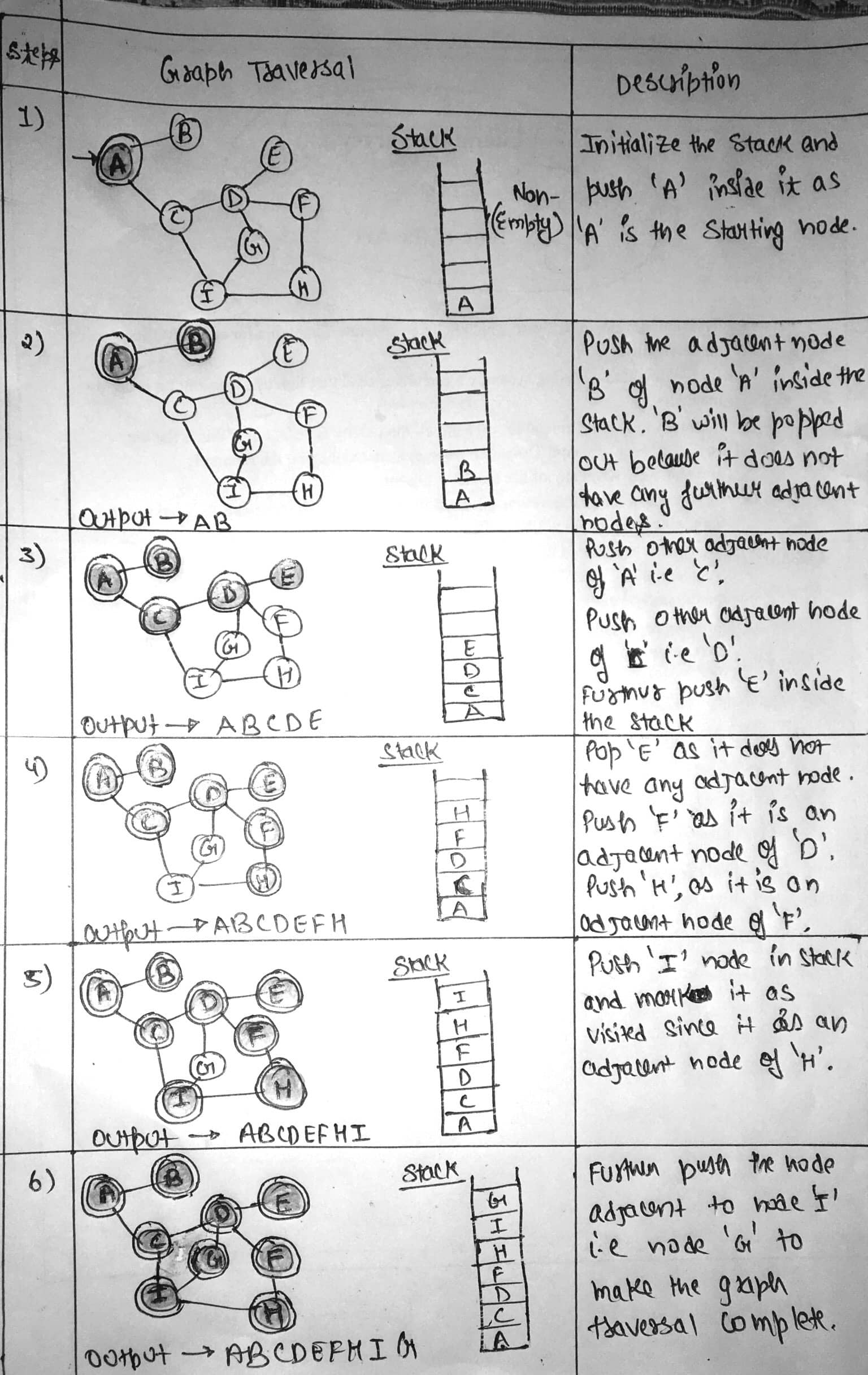Searching Strategies : Introduction
- Searching is a process to find
the solution for a given set of problems. This in artificial intelligence can be done by
using either uninformed searching strategies of either informed searching
strategies.
Un-Informed Search Strategy
-
Un-Informed search strategy further includes two techniques.
These are:
-
Breadth
First Search.
-
Depth First Search.
Breadth
First Search
-
In Breadth First
Search(BFS), the root node of the graph is expanded first, then all the
successor nodes are expanded and then their successor and so on i.e. the nodes
are expanded level wise starting at root level.
-
For
Example :

Searching Strategies : Breadth
First SearchDepth First
Search
-
In Depth First
Search(DFS), the deepest node is expanded in the current unexplored node of the
search tree. The search goes into depth until there is no more successor
nodes.
-
For
Example :

Searching Strategies : Depth
First SearchInformed
Search Strategy
-
Informed search strategy further includes two searching
techniques. These are:
-
A* Search
Technique.
-
AO* Search Technique.
A* Search
Technique
-
A* search
technique is an informal search strategy but can be called as a form of best
first search.
-
It is a search
technique which the most optimistic node is expanded by expanding a
graph.
-
The node of the graph can be evaluated by using two functions
i.e. g(n) and
h(n).
Here,
g(n) = Cost/Distance to reach
node “n”.
h(n) = Cost/Distance to reach from node “n” to the goal node.
-
For evaluating
any node, function f(n) is generated and used as:
f(n) = g(n) + h(n).
where,
f(n) = Estimated cost/distance
of solution through node “n”.
A* Technique
: Working
-
In the first
step, two sets are maintained:
-
OPEN SET:: It contains the set of nodes that needs to
be visited/Examined.
-
CLOSED SET:: It contains the set of nodes that have
already been visited or examined.
-
Every individual
node “n” maintains the function g(n), h(n) and f(n).
-
Each node also maintains link pointer to its parent node s that
the best solution can be retrieved, if found.
AO*
Algorithm
-
AO* algorithm is
the modified version of A* algorithm in order to cover up the limitations of A*
algorithm.
-
The AO* uses a
single structure i.e. “G”, unlike two sets
OPEN and CLOSE that was used in A*
algorithm.
-
The structure
“G” represents the part of the graph that
has been generated so far.
-
Each node of the
structure “G” is always connected either to
its immediate successor or predecessor.
-
The nodes of the
structure “G” also contains their
respective distance/cost from each other.
-
The cost between
the starting node to current node “n” of
structure “G” is not
stored.
-
Through this, AO* is always able to find solutions with minimum
cost.
- Breadth First Search.
- Depth First Search.

Searching Strategies : Breadth First Search

Searching Strategies : Depth First Search
- A* Search Technique.
- AO* Search Technique.
- OPEN SET:: It contains the set of nodes that needs to be visited/Examined.
- CLOSED SET:: It contains the set of nodes that have already been visited or examined.